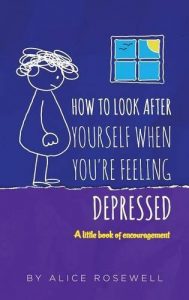What is Chronic Fatigue Syndrome (CFS)?
CFS (also known as ME, myalgic encephalomyelitis) is an illness which affects as many as 4 per 1000 of the UK population. Sufferers experience a disabling tiredness, as well as potential other symptoms, which may include headaches, an inability to concentrate and musculoskeletal pain. On occasion, people suffering from CFS might also experience depression or anxiety.
Although symptoms can be recognised early, CFS is not diagnosed unless a person has been suffering from its symptoms for at least 6 months. Prior to a diagnosis, a person can have been perfectly healthy, with no history to suggest a diagnosis of CFS. At this time, little is known as to what triggers the illness.
Managing CFS
Each individual suffering CFS will have a different experience. In some cases they may be able to manage on their own, with maybe an occasional day off work. In more severe cases their ability to concentrate might be so significantly reduced, which may make simple tasks more challenging to undertake in the workplace.
Research suggests that around 40% of sufferers will return and can function in the workplace. It is therefore important to have a tailored strategy in place to aid an employee suffering from CFS. This may even help further with their recovery. It is also important to note that those with CFS can have good and bad days. On a good day they can undertake their daily activities and appear capable and focused, and then on bad days they may have difficiutly getting out of bed in the morning.
The National Institute for Health and Care Excellence (NICE) advises that a treatment programme should aim to maintain and/or increase a CFS sufferer’s emotional and physical abilities, and that this programme should be devised by a healthcare professional, tailored specifically for an individual sufferer. It is important to highlight that the World Health Organisation (WHO) considers CFS a chronic (long-term) neurological condition.
As an employer, some symptoms to watch out for in an employee are possible self-medication, working longer hours, and increased sickness absence. If a work-environment is seeking to actively educate employees about early warning signs of potential health issues, this can have a positive lasting effect for both the company and its employees, especially for those already suffering from a long-term illness, and those who might experience an illness later on. It reasures an employee with CFS, or any long-term illness, knowing that their employer is supportive in helping them manage their illness.
Further reading and resources:





